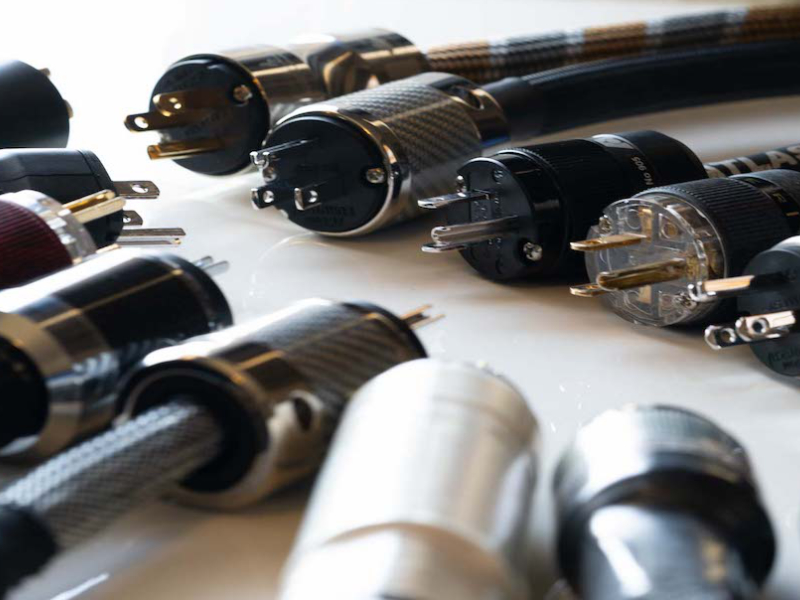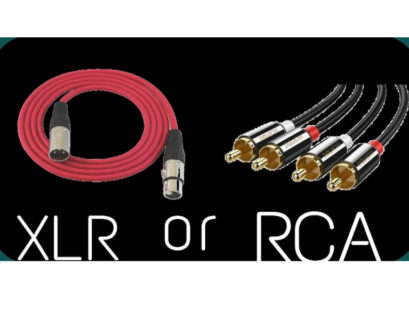It’s the time of year for saving money!
“If it seems too good to be true, it probably is.” Those words ring in my head anytime I see an ordinarily expensive audio cable posted on a web site at an astonishingly low price. Call it “cheap” even. Prices too low to make any sense. Yet on an ongoing basis, consumers, in this case audiophiles, looking to save money very often end up being swindled.
It is really sad there are those people who will knowingly, willingly and even happily cheat someone on a product being sold. Unfortunately, it happens all the time, and not just with high end audio products.
In specific regard to audio cables, fakes or knockoffs are usually done in the higher priced models. These would include cables such as Nordost Odin and Valhalla, Crystal Cable Ultimate Dream and Transparent Magnum Opus. Obviously, there are many more but these cable brands and models, and the others in their class, offer significant opportunity for fraud.
Many of these fraudulent cables come from the Far East, more specifically – China.
I spoke with Michael Taylor, the Sales Manager for Nordost and asked him what his company does about fake product sold online. He told me fraudulent cables come in two main varieties – cables not built by Nordost and cut downs.
Fakes have several things that tend to give them away. These include incorrect or no serial number (all Odin and Valhalla product has a wooden block with a serial number on the cable), wrong connectors and incorrect colors of the cable itself.
Nordost maintains a working relationship with Audiogon and eBay so fake product will usually be taken down pretty quickly. And Nordost is scanning these sites on an ongoing basis looking for counterfeit cables.
Taylor also told me it is not uncommon for foreign web sites claiming to sell Nordost at decidedly low prices are generally selling fraudulent cable products. He told me most any of the high-performance audio cable brands may be found on these sites. When considering purchasing cables from overseas online companies, it’s always a good idea to verify the authenticity of the cable product the online vendor is selling.
As for any specific identifiers, Taylor told me Nordost does not share that information because it makes the work of those making fake product easier. However, he did share with me several useful tips.
Some things to look for are cables that are not the correct color. All Nordost product will look the same within the various class of products. Odin product, for instance, will never be blue. Also, look for connectors that are not the same as the ones Nordost uses. On Odin and Valhalla, Nordost uses their own terminal they designed in house, so a commercial connector is never used. Many of the other cable manufacturers do the same thing so Nordost is not alone in custom connectors.
Another identifier is a lack of a serial number. If the web site does not show a clear picture of the serial number, provided the manufacturer uses them – which most do – then be wary of that product. Likewise, if the seller will not share the serial number, where the cable was purchased new or any other relevant information that might be used for verification, then maybe it is best to think twice before making a purchase.
Another way consumers are defrauded, according to Taylor, is where a long piece of cable is cut down into shorter versions. Suppose someone buys a legitimate three-meter interconnect, cuts it into thirds, adds connectors to each end and sells all three as an authentic one meter cable, which, incidentally, has a higher resale value than one three meter cable.
Because the connector used by Nordost, and actually most all of the ultra-high priced cable manufacturers, are proprietary and are not sold commercially, then a cut down product will always have the wrong terminations. Those incorrect connectors can usually be easily spotted.
Another problem with a cut down cable is the loss of performance. Nordost, as well as most other manufacturers, builds a cable to a specific length. These cables are designed for the length to which they are manufactured. When the length is cut, the mechanics of that cable are disrupted, thus affecting sound quality.
Another issue is the assembly. All high-end cable manufacturers utilize highly accurate fastening systems for connectors. Regardless if the termination is mechanically fastened or soldered, very accurate processes, typically by automated manufacturing, ensures a highly precise connection for the highest level of performance. Incorrectly attaching an incorrect, aftermarket connector significantly disrupts performance. Maybe this will not be seen, but will certainly be heard.
Nordost, as well as other cable manufacturers, always recommends consumers buy used cables from an authorized dealer. In that way, the authenticity of a used cable product may be ensured. Many consumers, in an understandable quest to save money, will very often forgo using a dealer and will buy online directly from an individual. Hopefully, these transactions occur with valid product, regardless of the manufacturer. All to often, sadly and unfortunately, that is not what happens.
Electronic components such as amps and speakers are not so easy to counterfeit. However, just because the component may be authentic, it does not for a second mean it is not damaged or underperforms in some way. As such, consumers must be very vigilant when buying used audio anything online.
Used equipment can be a fantastic way to save money. Buying used has the potential for obtaining components and cabling that would not otherwise be considered because of cost. It is also fraught with the potential for paying good money for something misrepresented and even downright fraudulent.
Be careful when buying online. As it applies to cables, take preventative measures to ensure the authenticity of the considered product for purchase. Ask the seller for the dealer’s name where the cable was purchased. Call that dealer and have them verify the serial number. Check the picture to ensure the cable looks correct. Compare that picture with something from the manufacture’s web site to be sure they both look the same. Take steps to be sure you are not being cheated.
A cable or interconnect normally selling for $10,000 should raise a banner of red flags if advertised online for $750. Bottom line, if it looks too good to be true, it usually is. And that includes hyper expensive audio cables.

















Given that almost ALL cable is OEM (original equipment manufacturer) and made in China, how do you know the brand name cable isn’t merely a generic combination off a menu from the OEM factory?
“It is really sad there are those people who will knowingly, willingly and even happily cheat someone on a product being sold.”.
Agreed. The only real solution is to have a third party engineering firm measure both the real and counterfeit items and publish the performance difference.
This is the cleverest scam ever – How are people gonna know if the cables are fake? The audiophiles will believe the cables sound fantastic! Is almost the perfect crime.